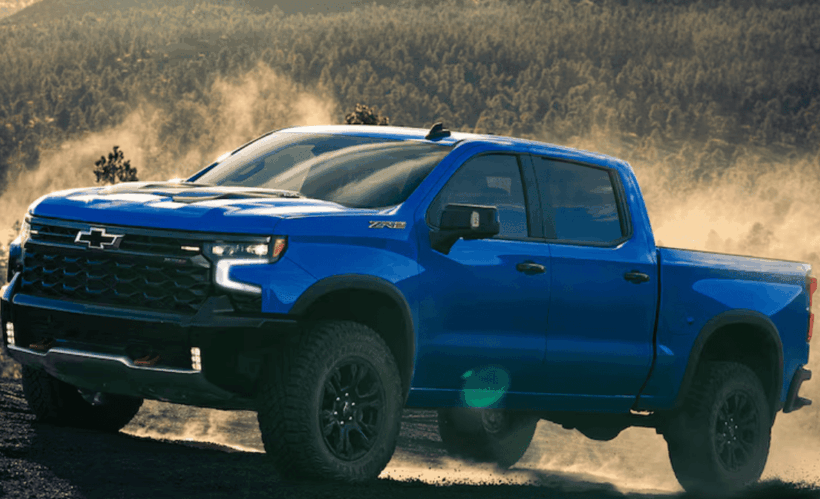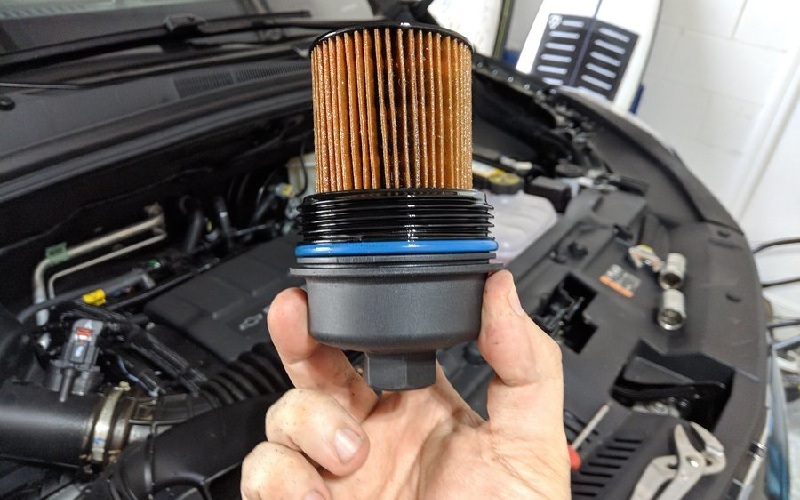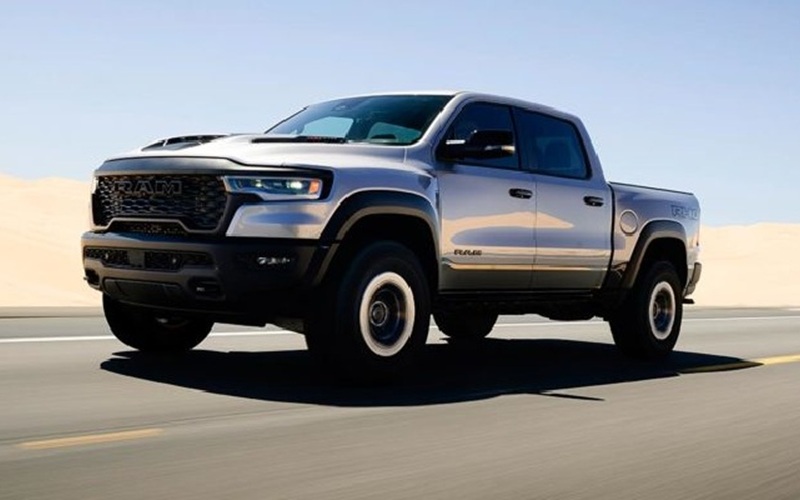Chevy Silverado: How to Warm Up the Engine in Winter
The Chevrolet Silverado stands as a premier pickup truck, offering exceptional performance, reliability, and capability even in the harshest winter conditions. However, when temperatures drop below freezing, proper engine warm-up becomes essential to protect your investment and ensure optimal vehicle performance. Let’s take a closer look at what makes winter engine warm-up so important for […]
The Chevrolet Silverado stands as a premier pickup truck, offering exceptional performance, reliability, and capability even in the harshest winter conditions. However, when temperatures drop below freezing, proper engine warm-up becomes essential to protect your investment and ensure optimal vehicle performance. Let’s take a closer look at what makes winter engine warm-up so important for your Silverado and the most effective methods to protect your truck through the coldest months.

Why Engine Warm-Up Matters in Cold Weather
The concept of warming up your Silverado dates back to older carbureted engines that required specific temperatures to function properly. While modern Silverado models feature advanced fuel injection systems that adjust for cold temperatures, warming up remains beneficial for several reasons.
Cold temperatures significantly impact your engine by thickening motor oil, making it harder for the engine to circulate lubricants properly. The resulting metal-on-metal contact during those first crucial moments after a cold start can accelerate wear on critical engine components. Additionally, other vehicle systems benefit from a brief warm-up period, including the warming of transmission fluid, battery recovery, and the proper functioning of emissions control systems.
For Silverado owners, winter engine warm-up is about striking a balance between protection and efficiency. The goal isn’t to idle excessively, but rather to bring vital systems to proper operating temperatures before subjecting the vehicle to demanding driving conditions.
The Modern Approach to Silverado Winter Warm-Up
The 2025 Silverado, with its advanced EcoTec3 engines and sophisticated engine management systems, handles cold starts differently than trucks from previous generations. Today’s optimal approach strikes a balance between engine protection, fuel efficiency, and environmental concerns.
For most modern Silverados, the ideal warm-up period in winter conditions is surprisingly brief, typically ranging from 30 seconds to 2 minutes, depending on the temperature. This initial idle period allows oil to circulate throughout the engine and reach critical components before you begin driving.
After this brief idle period, the most effective way to bring your Silverado to operating temperature is to drive at moderate speeds for the first 5-10 kilometres. During this initial driving period, avoid high RPMs, heavy loads, or aggressive acceleration until the temperature gauge shows normal operating temperature.
The Silverado engine control systems are programmed to adjust fuel delivery during cold starts, creating a richer fuel mixture that helps the engine warm faster. Once warmed, the system returns to normal fuel mapping for optimal efficiency.
Essential Winter Warm-Up Equipment for Your Silverado
Block Heaters: The Winter Essential
The block heater represents the most effective tool for Silverado owners facing extreme winter conditions. These devices warm the engine coolant or oil before starting, significantly reducing wear during cold starts and improving cabin heating time.
The Silverado offers several block heater options:
- Engine block heaters – Installed directly into the engine block to warm the coolant
- Oil pan heaters – Attach to the oil pan to maintain oil fluidity
- Freeze plug heaters – Replace a freeze plug with a heating element
Most Silverado models can be equipped with factory-installed block heaters, and aftermarket options are available for trucks without factory installations. For optimal results, connect your block heater for 2-4 hours before starting your truck when temperatures fall below -15°C.
Battery Warmers and Maintenance
The Silverado starting system faces significant challenges in extreme cold. Battery capacity can drop by up to 50% in temperatures below -18°C. Battery warmers insulate the battery or provide gentle heating to maintain power when you need it most.
Even the most powerful Silverado needs proper battery maintenance to ensure reliable winter starting. Ensure battery terminals remain clean and corrosion-free, and consider having your battery’s charge level tested before winter arrives. Many Silverado owners install higher-capacity batteries specifically rated for extreme cold weather performance.
Remote Starters: Convenience With Responsibility
The remote start system offers unparalleled convenience, allowing you to begin the warm-up process while remaining in the comfort of your home or office. While tempting to use extensively, remote starting should be approached responsibly:
- Limit remote start warm-up times to 1-2 minutes
- Use remote start in conjunction with a block heater for maximum efficiency
- Remember that excessive idling wastes fuel and increases emissions
The ideal approach combines a block heater to pre-warm the engine with a brief remote start period just before departure.
Driving Techniques for Cold Weather
Once your warm-up period is complete, how you drive during the first few kilometres significantly impacts engine longevity. The power and capability of the Silverado can tempt drivers to push hard from the start, but restraint delivers better long-term results.
During the first 5-10 minutes of winter driving:
1. Keep engine speeds below 3,000 RPM
2. Accelerate gradually and smoothly
3. Minimize towing or hauling heavy loads
4. Allow transmission temperatures to increase before engaging tow/haul mode
5. Use the temperature gauges to monitor when systems reach operating range
The Silverado instrument cluster provides valuable information about engine and transmission temperatures. Many models feature digital displays that indicate when critical systems have reached their optimal operating temperatures.
Winterize the Other Systems in Your Silverado
While engine warm-up receives the most attention, a complete winter preparation strategy addresses all vehicle systems. The performance in winter depends on more than just engine temperature.
Fluid Considerations Beyond Engine Oil
The Silverado utilizes multiple specialized fluids, each affected differently by cold temperatures:
- Transmission fluid – Becomes more viscous in cold weather, potentially affecting shift quality
- Differential fluid – Thickens significantly, increasing rolling resistance
- Power steering fluid – May become sluggish, temporarily increasing steering effort
- Brake fluid – Can absorb moisture, potentially compromising performance in freezing conditions
Many Silverado owners switch to winter-specific or full-synthetic fluids before the coldest months. These specialized formulations maintain proper viscosity across a wider temperature range.
Winter Tire Selection and Pressure Management
The substantial weight and power demand proper winter traction management. Dedicated winter tires with the mountain/snowflake symbol provide significantly improved grip in snow and ice compared to all-season alternatives.
Tire pressure fluctuates approximately 1 PSI for every 5°C temperature change. A Silverado with properly inflated tires during warmer weather will likely display underinflated pressure readings during cold snaps. Check tire pressure regularly during winter months, ideally when tires are cold, to maintain optimal traction and fuel economy.
Warm Up Your Driving with the Chevy Silverado
The Silverado delivers impressive cold-weather performance when properly maintained and operated with respect for winter conditions. By following these guidelines for engine warm-up and winter preparation, your truck will provide reliable service even through the harshest winter conditions, maintaining its capability and protecting your investment for years to come.
5 Winter Engine Facts About the Chevy Silverado
Before we address common questions about the Silverado winter performance, here are five interesting facts about cold weather engine operation:
1. At -30°C, motor oil can become nearly as thick as molasses, requiring up to 700% more energy to pump through the engine compared to normal operating temperatures.
2. A Silverado engine operating at normal temperature typically runs between 90-105°C—a difference of over 120 degrees from the outside air temperature on the coldest winter days.
3. Modern Silverado engines contain over 30 sensors that continuously adjust fuel delivery and timing to optimize cold-start performance.
4. In extreme cold, up to 30% of the energy from fuel is used simply to overcome internal friction in the engine and drivetrain before any power reaches the wheels.
5. The EcoTec3 engine family uses variable valve timing that adjusts differently during cold starts, creating a specific warm-up calibration that prioritizes heating the engine efficiently.
Winter Engine Warm-Up Questions
How long should I warm up my Silverado in winter?
- Modern models need only 30 seconds to 2 minutes of idling before driving gently. Extended idling wastes fuel and actually prolongs the warm-up process compared to light driving. The best approach is to take a brief idle followed by gentle driving until the normal operating temperature is reached.
Does my Silverado have a factory block heater?
- Most models sold in northern regions come with factory-installed block heaters, but it’s not standard on all models. Look for a cord tucked near the front grille or under the hood. If your truck didn’t come with one, dealerships can install a factory unit, or you can choose from numerous aftermarket options specifically designed for your engine.
Will excessive idling harm my Silverado engine?
- Extended idling can lead to carbon buildup, oil dilution from unburned fuel, and increased wear on engine components. The engine management system operates a richer fuel mixture during cold starts, and prolonged idling in this state can potentially foul spark plugs and contaminate the oil more quickly.
At what temperature should I plug in my block heater?
- For optimal effectiveness without wasting electricity, connect your Silverado block heater when temperatures fall below -15°C. At temperatures below -25°C, a block heater becomes essential for reliable starting and reduced engine wear.
How can I monitor my Silverado warm-up progress?
- The driver information center in modern models provides detailed temperature information. Look for coolant temperature to reach at least 70°C before considering the engine properly warmed. Some models also display transmission temperature, which warms more slowly than the engine.
Disclaimer: Content contained in this post is for informational purposes only and may include features and options from US or international models. Please contact the dealership for more information or to confirm vehicle, feature availability.


